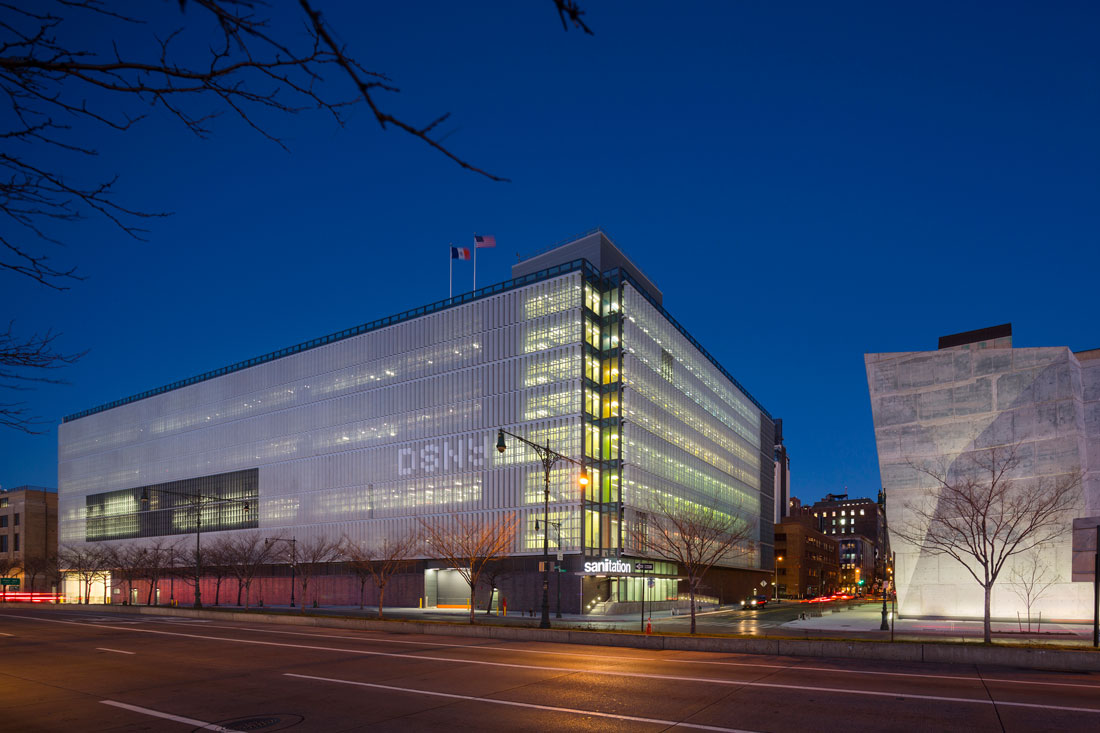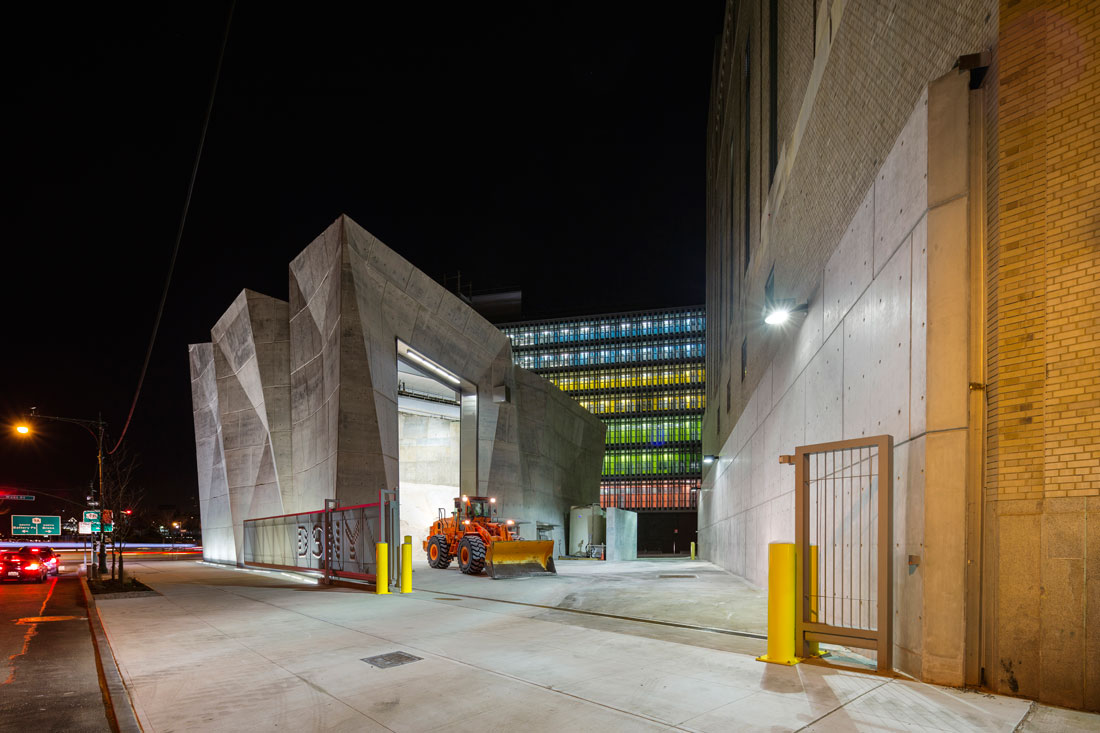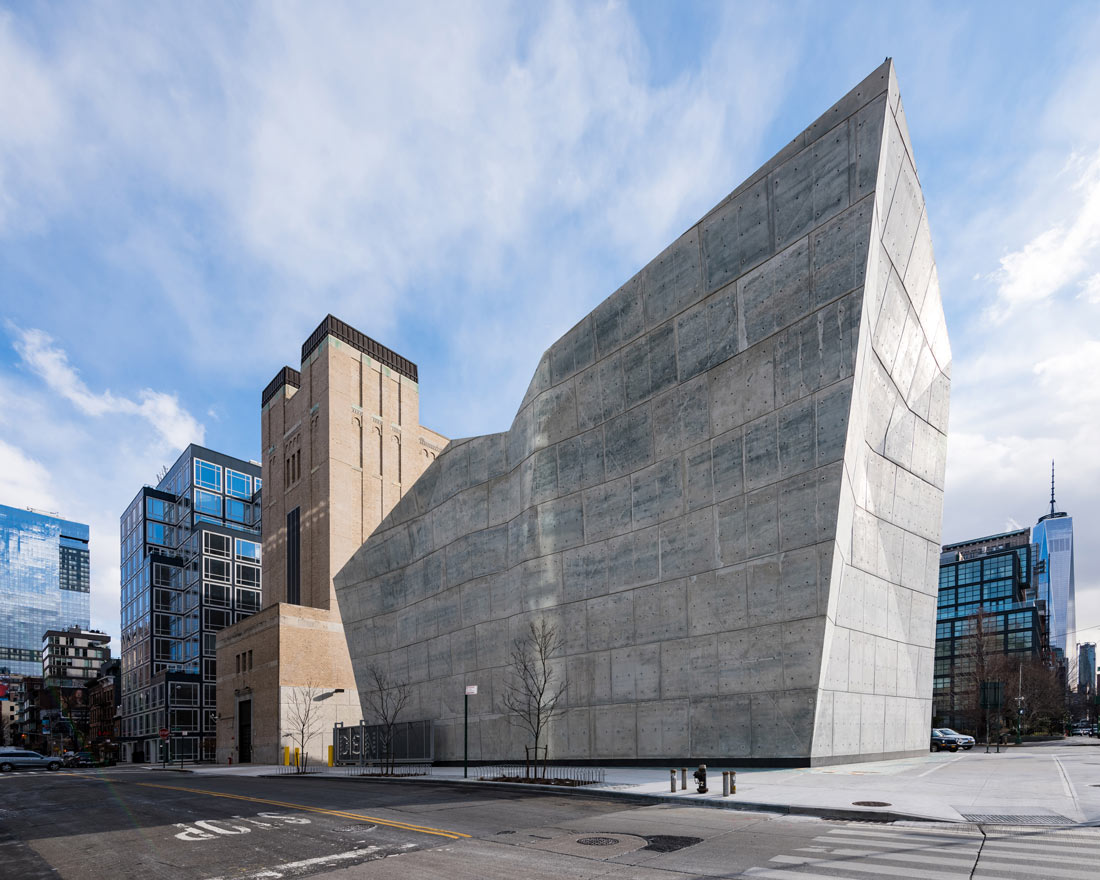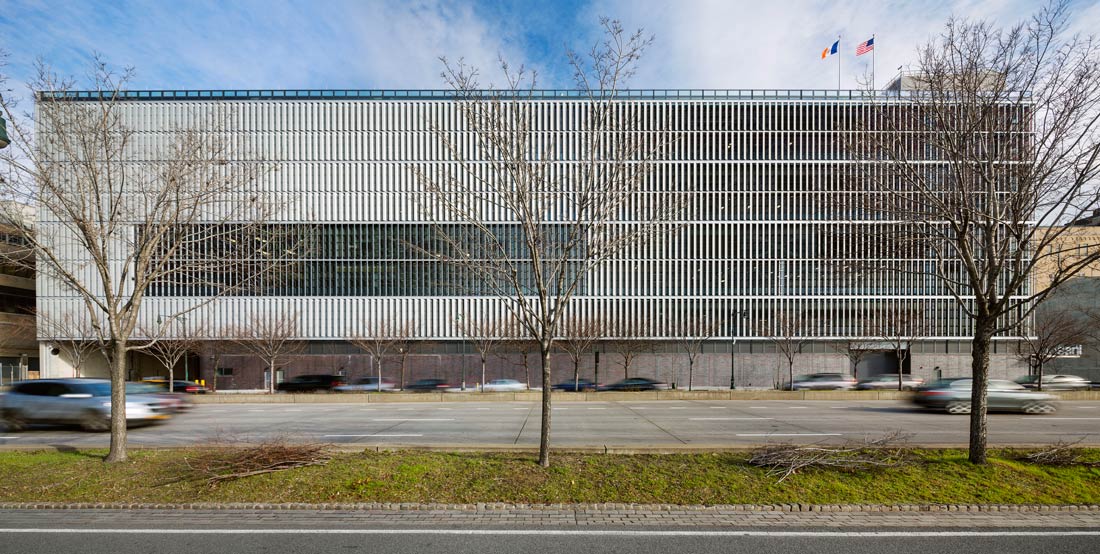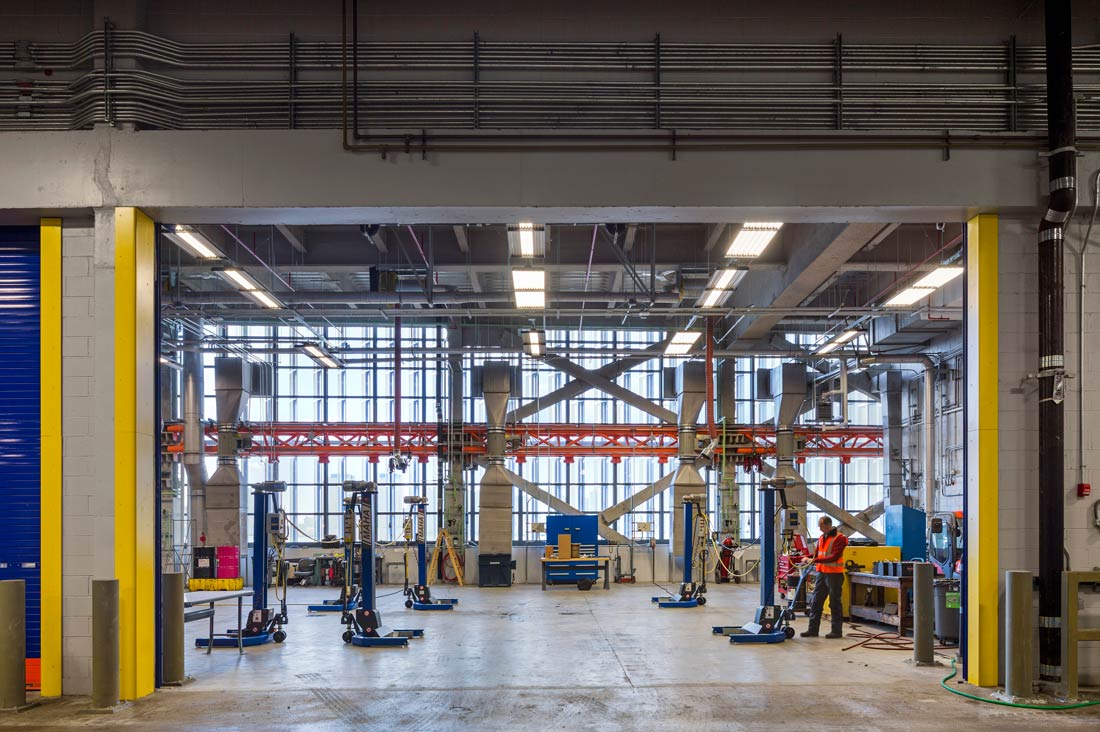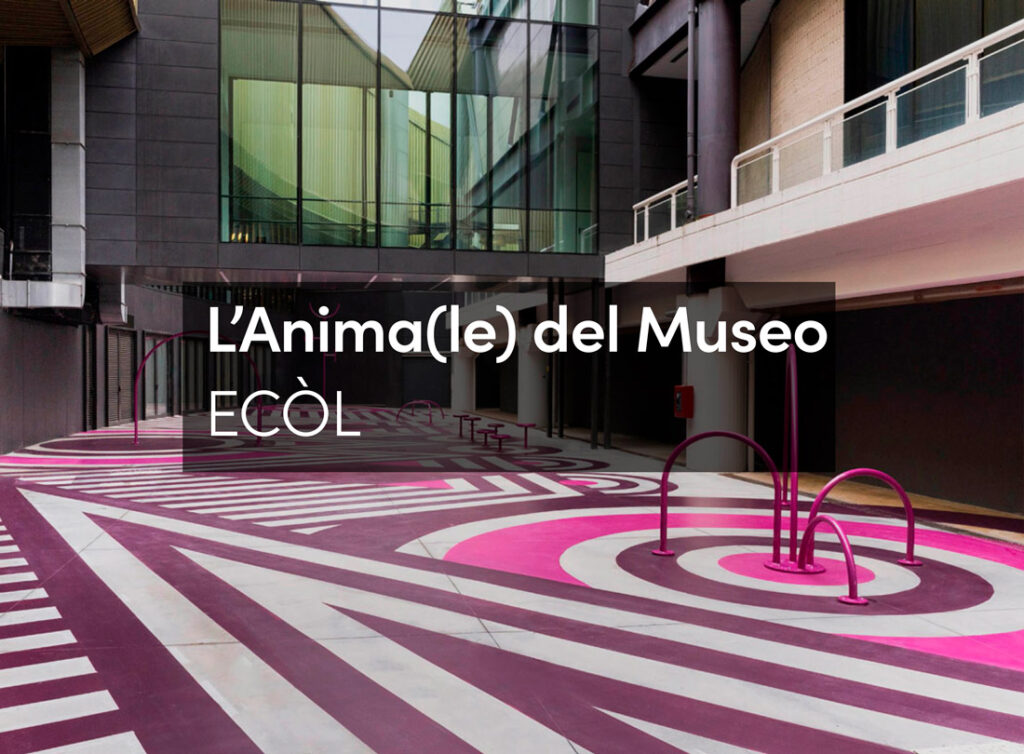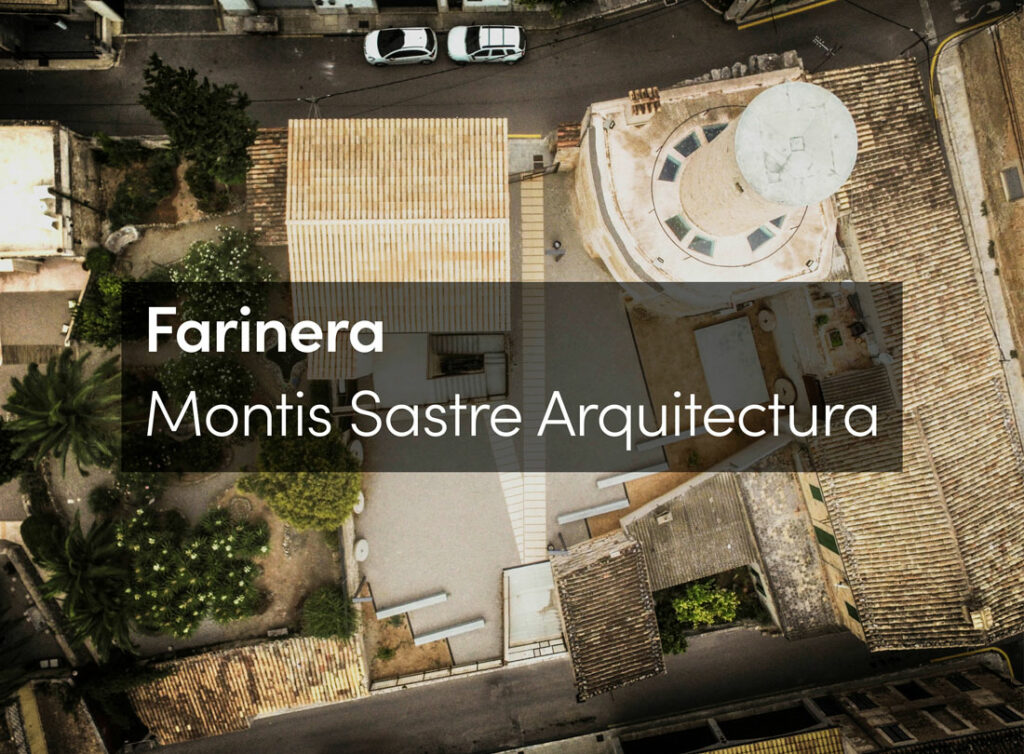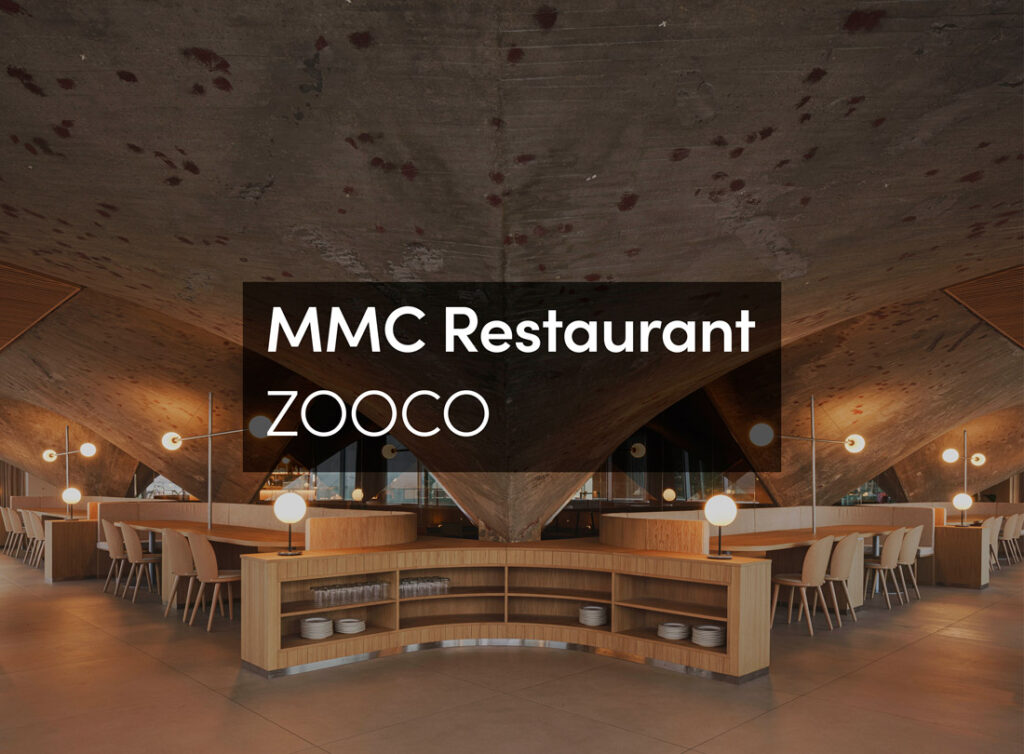Located at the terminus of Canal Street at the Hudson River, the Salt Shed’s crystalline, faceted planes enliven this highly visible structure, acting as a counterpoint to the diaphanous, scrim-like façade of the M125 Garage, directly across Spring Street to the north. Rising nearly 70 feet, the shed houses 5,000 tons of salt and marks the historic location where the former canal enclosing Lower Manhattan met the Hudson River. The cast-in-place concrete structure tapers toward the bottom—creating more pedestrian space beneath a dramatic overhang. The shed emerges from a moat of textured glass paving, further contributing to the enigmatic and iconic nature of this place in the city. Architectural concrete was a natural material selection for the Salt Shed, serving as both the building structure and exterior finish, eliminating the need for additional materials. The smooth finish and light color of the concrete emphasizes the form of the building, while its natural color variations, which will resemble the color of salt with more exposure to sunlight, provide a grounded appearance — resonating with the salt contained within.
The design of the Salt Shed had to reconcile several conflicting factors—a community resisting its realization; finding a form suitable for its important location; and safely storing salt for seasonal distribution. While the structure’s form embraces salt, materials were chosen to prevent its corrosive effects: the concrete admixture is self-waterproofing and a hardener was applied to the concrete floor. Due to its location in a flood plain, the shed’s floor was raised, and a deployable dam system installed.
Directly across Spring Street, the Manhattan Districts 1/2/5 Garage, houses three district garages for the NYC Department of Sanitation. The new multi-story building accommodates over 150 sanitation vehicles including trucks, front-end loaders, salt spreaders, heavy-equipment wreckers, and personnel vehicles; separate vehicle wash and personnel facilities for each district; and centralized fueling and repair facilities. The double-skin façade wraps the curtain wall with 2,600 custom, perforated, metal fins, vertically articulating and lighting the building’s massing. Operable for the occupied spaces, the fins reduce solar heat gain and glare, create an ethereal wrapper to obscure mechanical louvers, and shield the view of headlights from neighbors. An extensive 1.5-acre green roof softens views from neighboring buildings, protects the roof membrane, and enhances storm water retention and thermal performance.
A benchmark project for NYC’s Active Design program, the garage has achieved LEED Gold certification. As the first LEED rated Department of Sanitation facility, an interactive and iterative design process was critical to establishing project goals. The team worked closely with DSNY and a Community Board approvals process, through a series of workshops to develop the program requirements for a vertically organized multi-district garage. Through this process, opportunities were identified for combining shared spaces, reducing floor to floor heights, and optimizing circulation efficiency.
The design team’s approach to infrastructure as civic architecture is to assume design excellence, environmental responsibility and sensitivity to the urban context. Although municipal infrastructure projects are often targeted as undesirable uses, the community has embraced the project and applauded its architecture as the means of successfully integrating critical services into the neighborhood.

